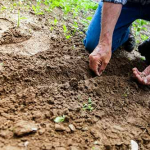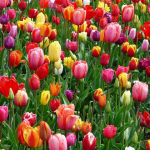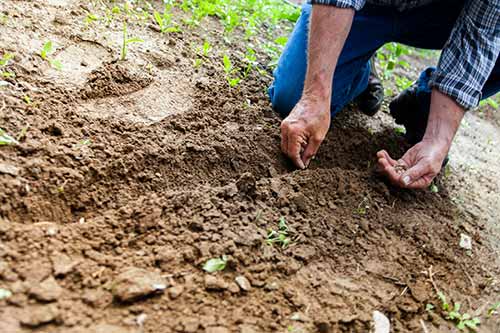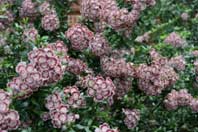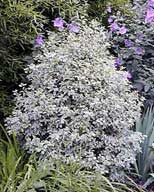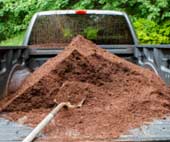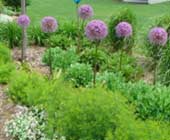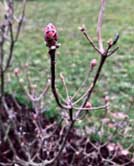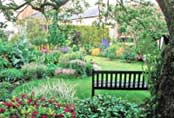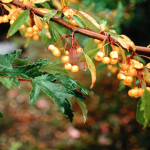Plants To Feed The Birds By Bruce Bennett (WSU Certified Master Gardener)
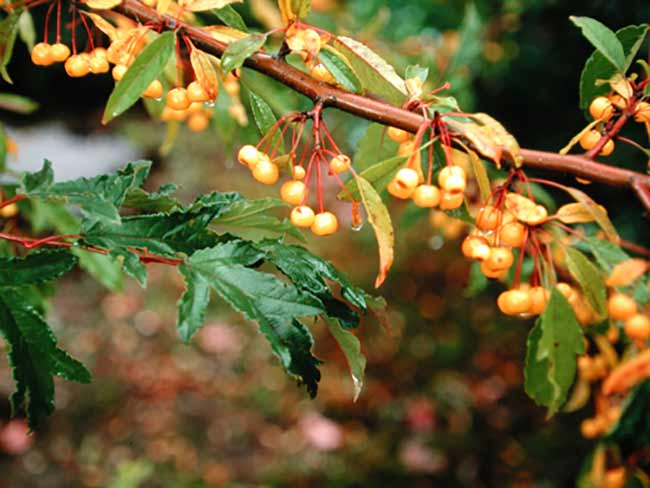
This month’s column was started during the first week of December while I was digesting the (hopefully) last turkey and cranberry sandwich of the season. Looking out the living room window into the fog drenched back yard, I watch the robins making their own lunch on the very small yellow fruit of a ‘Golden Raindrops’ Crab Apple tree (Malus transitoria ‘Schmidtcutleaf’). One of the reasons for the purchase of the tree was because of this very reason – the feeding of winter’s wildlife and the increased visual interest for me. Spring brings fragrant white blooms to this tree. Summer provides yellow-green deep-cut leaves and then transitions to yellow and orange in autumn. After the leaves fall, early autumn provides a golden haze of tiny crab apples and, through January, the aerial antics of robins and other birds eating the fruit. I suppose the heated birdbath also helps to attract them when other water sources are covered with a layer of ice.
I mention this crab apple as an example of getting the biggest bang as possible for your garden design buck; greater visual interest as well as a way to keep birds in the yard throughout the year. The deal is that you feed them now and they feed on the insects in your yard for the rest of the year. Some, like hummingbirds, will stay year-round while other ‘snowbirds’ will remember this back yard next winter. This is also a garden design decision. What plants will be placed beneath the spreading branches? What other plants in the yard will echo the gold tones of the leaves and apples of ‘Golden Raindrops’? Ornamentals and/or natives? A ground cover or grass or gravel? It is possible to exercise one’s artistic skills and still help to protect and diversify nature with the same thoughtful actions (And, in answer to one reader’s question, all plants mentioned in these columns are hardy to our hardiness zones). If you want to help the birds in your yard during those harsh winter months, there are a number of native and non-native shrubs and trees that will help provide food and shelter for them, with the addition of extended visual interest for you during our dreary winter months.
For taller native plants, consider the Eastern and Western Serviceberries (Amelanchier canadensis and utahensis). Depending on the cultivar, they will grow to 6’ – 15’ and will hold any uneaten berries through the winter. The Western Staghorn Sumac (Rhus glabra) (shown above) has a good-looking autumn color and will attract many varieties of over wintering birds. Your cold-weather buggies will quickly recognize the natives and take a bit longer to learn about the other ornamental berries in the yard.
Winterberry Hollies (Ilex verticillata) are natives whose cultivars can have fruit that range in color from yellow to orange to red. They are deciduous and scene stealers in autumn and winter, especially when backed by taller, contrasting plants. They are adaptable to both wet and dry soils. Remember you will need both male and female (dioecious) plants for fruit production. This will be true for many berry-bearing plants. It is why I continue to mention the idea of gardeners doing their research before making plant purchases.
For non-native food sources, consider fruitful, deciduous Japanese Barberries. The are many varieties which offer leaf colors from chartreuse to orange, red and burgundy and sizes from 1’ – 10’ tall. Excellent for full sun, this shrub has few invasive tendencies in western Washington.
The Beauty Berry ‘Profusion’ (Callicarpa bodinieri) has the WOW factor you want in the way of a winter berry-bearing shrub that will feed wildlife and have your neighbors taking a second look at your yard. Another excellent family of plants are the viburnums. Both deciduous and evergreen, for sun or shade, these shrubs are workhorses in the landscape with dark blue fruit that will feed your birds.
And, although related to neither berries nor seeds, think about adding a heated feeder for the Anna’s Hummingbirds that stay with us year-round and are joined by Rufous and Calliope hummingbirds for summer before again migrating to Mexico in September and October.
Look at providing your wildlife with a smorgasbord of meals and increased landscape interest by adding some seed-producing perennials to your landscape. Obvious candidates include ornamental grasses, Coneflowers (shown at left), Coreopsis, Tall Phlox, Asters, Black-eyed Susans, Globe Thistles and Sedums. There are a number of annual plants that will also nourish your garden wildlife. I don’t use many annuals in the yard, but, the ones that do come to mind include Marigolds, Cosmos and Sun Flowers. Feed your birds this winter and they will feed your sense of winter whimsey and eco-accomplishment.
A Couple of Random Thoughts………..
Did you realize that, even in winter, you can still get answers to your indoor and outdoor plant and disease questions from the Master Gardeners of King County? They are available to assist you year-round with your horticultural conundrums. Send your questions (and photos) to them at: extension.wsu.edu/king/ask-a-master-gardener/ and keep our local gardening volunteers mentally stimulated, rather than hibernating.
And, let’s not forget to reserve a day (or three) between February 19 & 23 for the NW Flower and Garden Festival. This is the second (after Philadelphia) largest horticultural extravaganza in the country. The acres of display gardens and vignettes are spectacular and the 400 plant and other vendors, with their well-grown new plants, garden art, etc., should not be missed. Probably the best feature is the excellent selection of 130+ seminars on a wide variety of topics. All this and other daily events for just the cost of a ticket. For more details, visit the event’s website at www.gardenshow.com. I expect to be at the Washington Master Gardeners Booth (#2158) during parts of the Festival. Feel free to come by, say Hi! and, whether I am there or not, ask your horticultural questions to the experienced veterans of the program. Until next month, Happy New Year and Happy Gardening!
Additional Reading
Erickson, Laura. 100 Plants to Feed the Birds: Turn Your Home Garden into a Healthy Bird Habitat. 2022. North Adams, MA: Storey Publishing.
Shewey, J, & Blount, T. Birds of the Pacific Northwest. 2017. Portland, OR: Timber Press.
Tekiela, Stan. Birds of Washington Field Guide. 2022. Cambridge, MN: Adventure Publications.
Waldon, Robert. Feeding Winter Birds in the Pacific Northwest. 1994. Seattle, WA: Mountaineers Books.
Contributing columnist, Bruce Bennett, is a WSU Certified Master Gardener, Certified Professional Horticulturalist, garden designer and lecturer. If you have questions concerning this article, have a gardening question or two to ask concerning your own landscape or want to suggest a topic for a future column, contact him at gardenguy4u@gmail.com.

